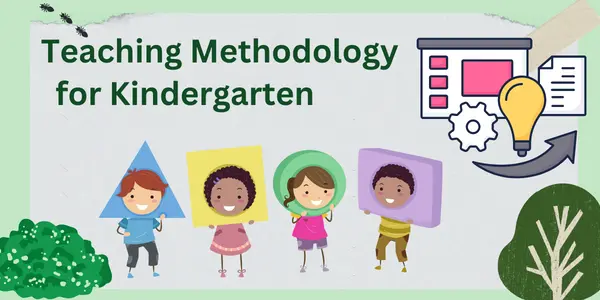
Innovative Kindergarten Teaching Methods to Nurture Young Minds
November 22, 2023
In the ever-evolving landscape of education, kindergarten classrooms are emerging as dynamic hubs of innovation, where traditional teaching methods meet cutting-edge approaches. As we prepare our youngest learners for a future filled with technological advancements and unknown possibilities, innovative teaching methods in kindergarten play a pivotal role. Join us on a journey through the exciting realm of Kindergarten. Where the seeds of curiosity are planted using groundbreaking educational strategies.
1. Tech-Savvy Tots: Integrating Technology into Early Learning
Welcome to the era of tech-savvy tots! In progressive kindergarten classrooms, educational technology is seamlessly woven into the fabric of daily activities. From interactive learning apps to child-friendly tablets, kindergartners are exposed to age-appropriate digital tools that not only capture their attention but also lay the groundwork for digital literacy—an essential skill in the 21st century.
2. Playful Coding: Nurturing Young Programmers
Move over building blocks; it’s time for coding adventures in kindergarten! Innovative kindergarten teaching methods introduce coding concepts through playful activities that transform coding from a complex language to a series of exciting challenges. These activities not only enhance logical thinking. But also cultivate problem-solving skills from a tender age, preparing young minds for the logic-driven world they will navigate in the future.
3. Project-Based Exploration: Learning Through Discovery
Kindergarten classrooms are shifting from a teacher-centric model to a more child-driven, project-based approach. Through hands-on projects, young learners delve into topics that pique their curiosity. Whether it’s exploring the life cycle of a butterfly or creating a mini garden, these projects foster a love for exploration, critical thinking, and teamwork—all crucial skills for future innovators and leaders.
4. Multisensory Learning: Engaging all Senses for Holistic Understanding
Gone are the days of passive learning; kindergarten educators now understand the power of engaging all the senses. Innovative teaching methods incorporate multisensory experiences, from sensory bins and interactive games to art activities that stimulate creativity. This approach not only makes learning fun but also ensures that each child’s unique learning style is acknowledged and nurtured.
5. Cultivating Emotional Intelligence: Mindfulness and Social-Emotional Learning
The innovative kindergarten teaching method isn’t just about academic readiness; it’s about fostering well-rounded individuals. Mindfulness activities and social-emotional learning are woven into the curriculum, helping children understand and regulate their emotions. These practices lay the foundation for strong interpersonal skills, empathy, and self-awareness—essential qualities for navigating the complexities of the future.
Conclusion
In the dawn of Kindergarten 2.0, innovative teaching methods are transforming classrooms into launchpads for lifelong learning. As young minds embark on this educational journey, they are not just acquiring facts. They are developing the skills, attitudes, and adaptability needed to thrive in an ever-changing world. Kindergarten has become a place where innovation and imagination collide, preparing our little ones not just for the future, but for a future they will help shape.


